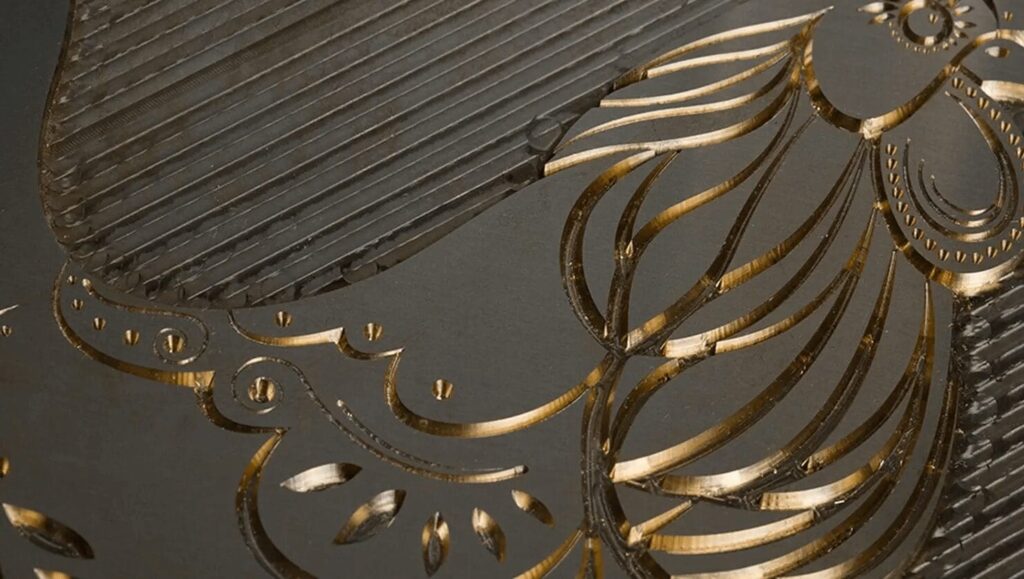

Hot foil stamping is a popular printing technique used to enhance the appearance of packaging, stationery, and various printed materials. The stamping is done using a die – the tool that transfers the foil onto the substrate. Dies can be made from different materials, each offering unique characteristics and advantages. There are two primary types of dies used in hot foil stamping: brass dies and magnesium dies.
What Are Dies in Hot Foil Stamping?
Dies are the moulds used to create the design on the material being stamped. They are engraved with the desired pattern, logo, or text and then heated and pressed onto the foil and substrate. The choice of die material can significantly impact the quality, durability, and cost of the final product.
Brass Dies
Brass dies are made from high-quality brass, a metal alloy primarily composed of copper and zinc. Brass is known for its durability, excellent heat conductivity, and resistance to wear.
Advantages of Brass Dies
- Durability: Brass dies are highly durable and can withstand extensive use without degrading. This makes them ideal for long print runs where the same die will be used repeatedly.
- Detail Precision: Brass dies can be engraved with very fine details, making them perfect for intricate designs and small text. The precision of brass dies ensures that even the most delicate elements of a design are accurately reproduced.
- Heat Conductivity: Brass conducts heat efficiently, ensuring that the foil is evenly transferred to the substrate. This results in a consistent and high-quality finish.
- Versatility: Brass dies can be used on a wide range of materials, including paper, cardboard, plastic, and leather. This versatility makes them a popular choice for various hot foil stamping projects.
Disadvantages of Brass Dies
- Cost: Brass dies are generally more expensive than magnesium dies. However, their durability and precision can justify the higher initial investment, especially for large or high-quality print runs.
Magnesium Dies
Magnesium dies are made from magnesium, a lightweight metal known for its affordability and ease of engraving. These dies are often used for shorter print runs and less intricate designs.
Advantages of Magnesium Dies
- Cost-Effective: Magnesium dies are less expensive to produce than brass dies. This makes them an excellent choice for short print runs or projects with a limited budget.
- Quick Production: Magnesium is easier to engrave than brass, allowing for faster production times. This can be beneficial for projects with tight deadlines.
- Lightweight: The lightweight nature of magnesium dies makes them easy to handle and install, reducing the physical strain on operators.
Disadvantages of Magnesium Dies
- Durability: Magnesium dies are less durable than brass dies. They can wear out more quickly, especially under high-pressure or long print runs.
- Detail Limitation: Magnesium dies are not as capable of reproducing fine details as brass dies. They are better suited for simpler designs and larger text.
Choosing the Right Die for Your Project
When selecting a die for your hot foil stamping project, consider the following factors:
- Project Scope
Brass dies are often the best choice for large print runs or projects requiring high precision and durability. They can withstand extensive use without losing detail, making them ideal for such applications. - Budget
If budget constraints are a concern, magnesium dies offer a cost-effective solution, especially for short print runs or less detailed designs. They provide a balance between cost and functionality. - Design Complexity
Brass dies are preferable for intricate designs and small text due to their ability to reproduce fine details with precision. - Material Compatibility
Consider the substrate you will be using. Brass dies are versatile and can be used on a wide range of materials, making them a flexible choice. Magnesium dies work well with paper and cardboard but may not be suitable for more durable materials. - Production Speed
If quick turnaround is essential, magnesium dies can be produced faster than dies, making them a suitable option for urgent projects.
Each type of die has its unique advantages and limitations, making them suitable for different applications. Selecting the right die material will allow your hot foil stamping project to be both efficient and effective, resulting in stunning and professional finishes. Contact us for dies today.